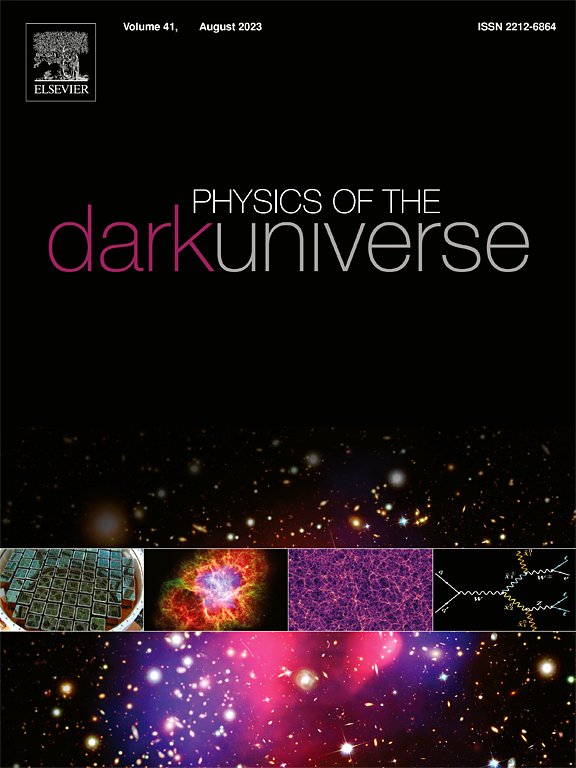Exploring traversable wormholes in modified theory: Complexity and VIQ perspective under solitonic quantum wave dark matter halo
IF 6.4
2区 物理与天体物理
Q1 ASTRONOMY & ASTROPHYSICS
引用次数: 0
Abstract
The traversable wormholes are analyzed in this study, incorporating the quantum wave dark matter halo and the electromagnetic field, in the framework of gravity. The wormhole model is built upon the Morris-Thorne geometry, and the corresponding motion equations are derived for an anisotropic fluid within a typical modified gravity framework. Our next step is to derive the shape functions by considering distinct redshift parameters. These two functions adhere to the required conditions, linking two asymptotically flat regions of spacetime. We then proceed to formulate a couple of solutions through the resulting shape functions and make sure that they are in accordance with the violation of null energy bounds. Moreover, we assess the complexity factor and active gravitational mass, studying the point or area on the manifold where they approach to zero. It is demonstrated that both these quantities gain negative values in particular spacetime areas. The study also looks into the physical properties of wormholes, paying attention to the volume integral quantifier and embedding diagrams. The conclusions point to the fact that the derived wormhole geometries fulfill the necessary requirements, enabling them to exist within the modified gravity framework under consideration.
在修正理论中探索可穿越虫洞:在孤子量子波暗物质晕下的复杂性和VIQ视角
本文在f(R,T)引力的框架下,结合量子波暗物质晕和电磁场对可穿越虫洞进行了分析。在Morris-Thorne几何基础上建立了虫洞模型,并推导了典型修正重力框架下各向异性流体的运动方程。我们的下一步是通过考虑不同的红移参数来推导形状函数。这两个函数符合所要求的条件,连接两个渐近平坦的时空区域。然后,我们继续通过所得到的形状函数来制定两个解,并确保它们符合零能界的违反。此外,我们评估了复杂性因子和有效引力质量,研究了流形上它们趋近于零的点或面积。结果表明,这两个量在特定的时空区域内均为负值。研究了虫孔的物理性质,重点研究了虫孔的体积积分量词和嵌入图。结论指出,导出的虫洞几何形状满足了必要的要求,使它们能够存在于所考虑的修正重力框架中。
本文章由计算机程序翻译,如有差异,请以英文原文为准。
求助全文
约1分钟内获得全文
求助全文
来源期刊

Physics of the Dark Universe
ASTRONOMY & ASTROPHYSICS-
CiteScore
9.60
自引率
7.30%
发文量
118
审稿时长
61 days
期刊介绍:
Physics of the Dark Universe is an innovative online-only journal that offers rapid publication of peer-reviewed, original research articles considered of high scientific impact.
The journal is focused on the understanding of Dark Matter, Dark Energy, Early Universe, gravitational waves and neutrinos, covering all theoretical, experimental and phenomenological aspects.
 求助内容:
求助内容: 应助结果提醒方式:
应助结果提醒方式:


